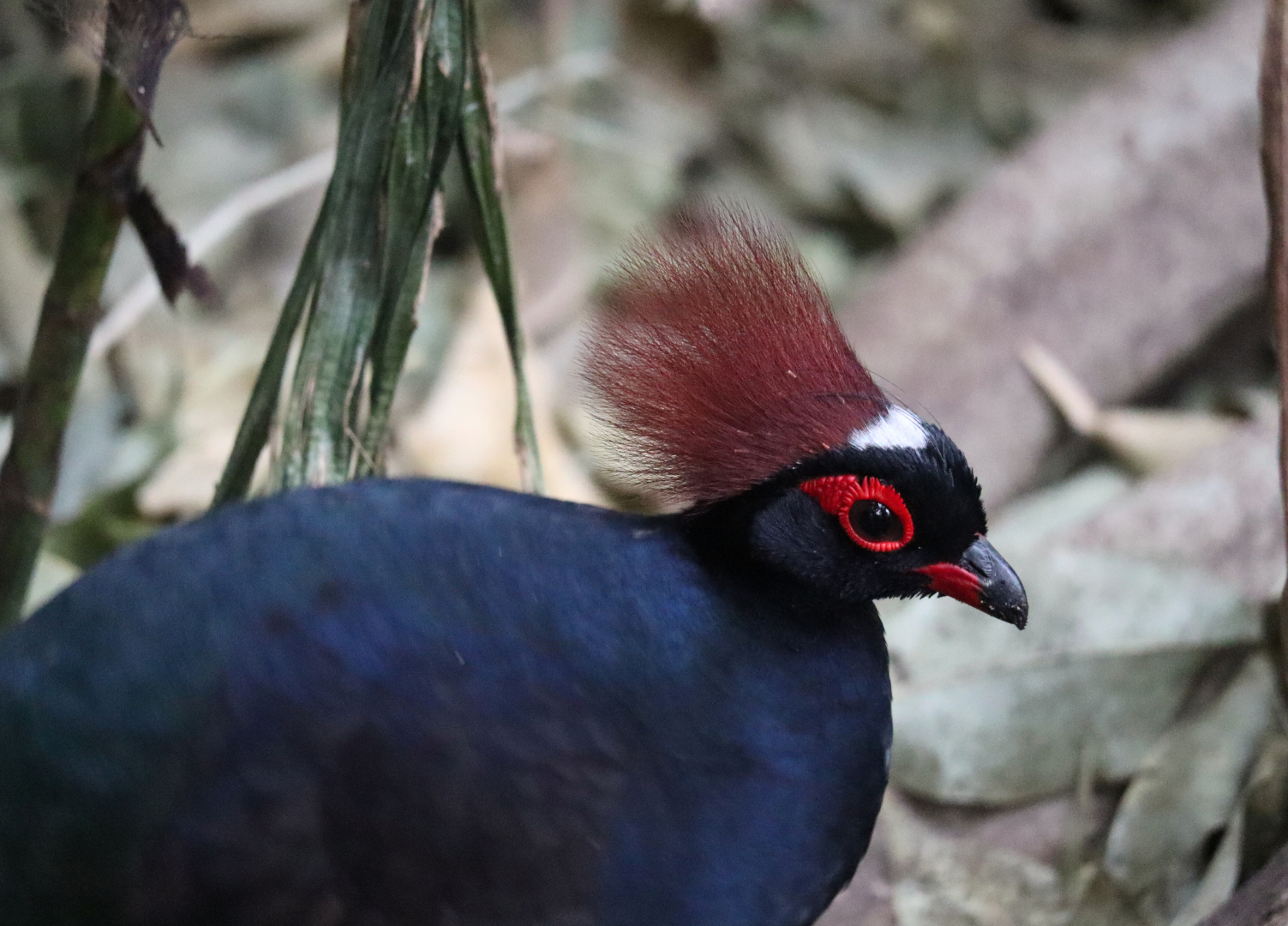I LIVE IN ASIA
The crested wood partridge is native to forest habitats with dense second growth throughout southeast Asia.
I AM AN OMNIVORE
The crested wood partridge eats a variety of seeds and fruits, as well as insects and some small mollusks.
CRESTED WOOD PARTRIDGES ARE SOCIAL
Crested wood partridge are a very social bird species. They can can often be found living in groups of 12 or more individuals, and parents will typically share the responsibility of caring for young.
COUPLES FULL OF COLOR
Crested wood partridges are a sexually dimorphic species, meaning males and females look very different. Male crested wood partridges can be spotted easily by the red tufts of feathers on their heads. Female crested wood partridges do not have this tuft of feathers and are a bright green color with brown wings.
HELPING THE CRESTED WOOD PARTRIDGE IN THE WILD
The crested wood partridges at the Fort Wayne Children’s Zoo are enrolled in the Species Survival Plan (SSP). SSP is a program implemented by the Association of Zoos and Aquariums (AZA) to help ensure a genetically viable population exists.
I AM IMPORTANT TO MY ECOSYSTEM
The crested wood partridge plays an important role in the ecosystem through seed dispersal, which boosts biodiversity in the environment. This bird species is also helpful in keeping certain fish and invertebrate species under control.

